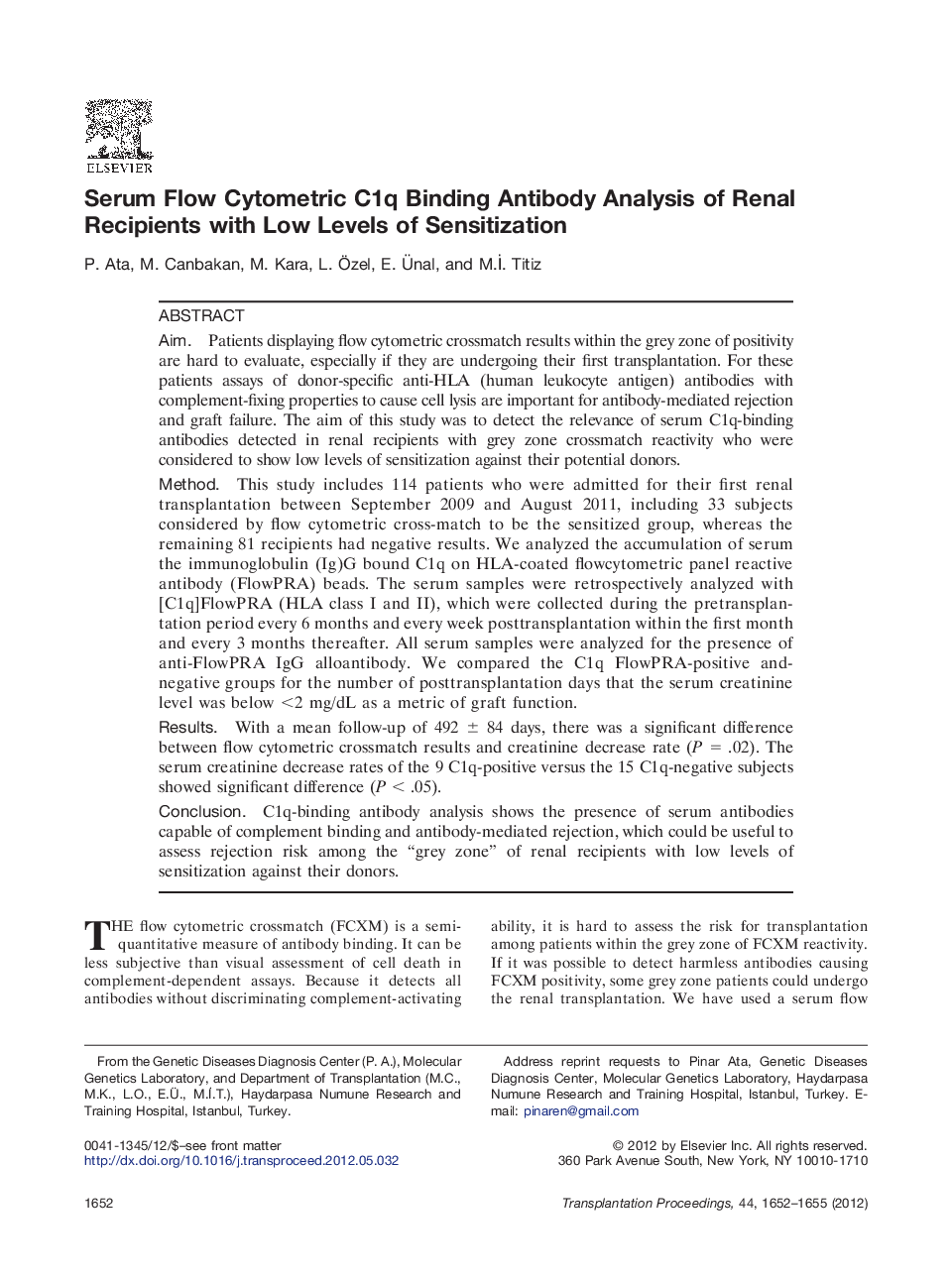| Article ID | Journal | Published Year | Pages | File Type |
|---|---|---|---|---|
| 4259930 | Transplantation Proceedings | 2012 | 4 Pages |
AimPatients displaying flow cytometric crossmatch results within the grey zone of positivity are hard to evaluate, especially if they are undergoing their first transplantation. For these patients assays of donor-specific anti-HLA (human leukocyte antigen) antibodies with complement-fixing properties to cause cell lysis are important for antibody-mediated rejection and graft failure. The aim of this study was to detect the relevance of serum C1q-binding antibodies detected in renal recipients with grey zone crossmatch reactivity who were considered to show low levels of sensitization against their potential donors.MethodThis study includes 114 patients who were admitted for their first renal transplantation between September 2009 and August 2011, including 33 subjects considered by flow cytometric cross-match to be the sensitized group, whereas the remaining 81 recipients had negative results. We analyzed the accumulation of serum the immunoglobulin (Ig)G bound C1q on HLA-coated flowcytometric panel reactive antibody (FlowPRA) beads. The serum samples were retrospectively analyzed with [C1q]FlowPRA (HLA class I and II), which were collected during the pretransplantation period every 6 months and every week posttransplantation within the first month and every 3 months thereafter. All serum samples were analyzed for the presence of anti-FlowPRA IgG alloantibody. We compared the C1q FlowPRA-positive and-negative groups for the number of posttransplantation days that the serum creatinine level was below <2 mg/dL as a metric of graft function.ResultsWith a mean follow-up of 492 ± 84 days, there was a significant difference between flow cytometric crossmatch results and creatinine decrease rate (P = .02). The serum creatinine decrease rates of the 9 C1q-positive versus the 15 C1q-negative subjects showed significant difference (P < .05).ConclusionC1q-binding antibody analysis shows the presence of serum antibodies capable of complement binding and antibody-mediated rejection, which could be useful to assess rejection risk among the “grey zone” of renal recipients with low levels of sensitization against their donors.
